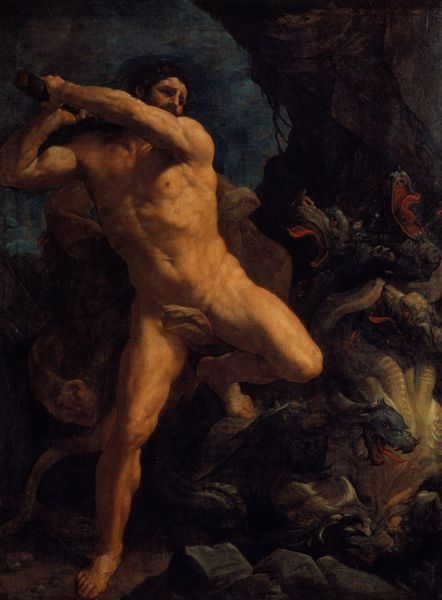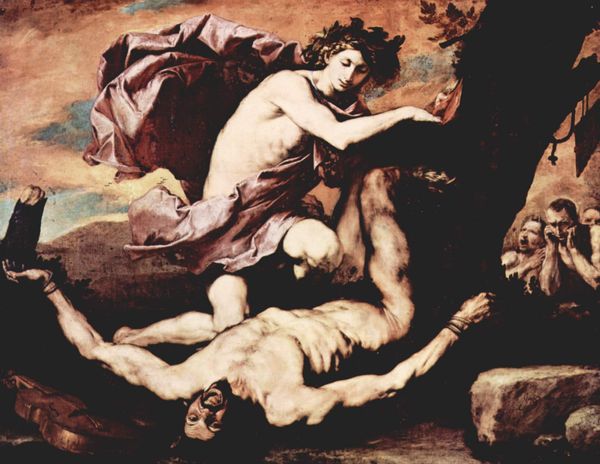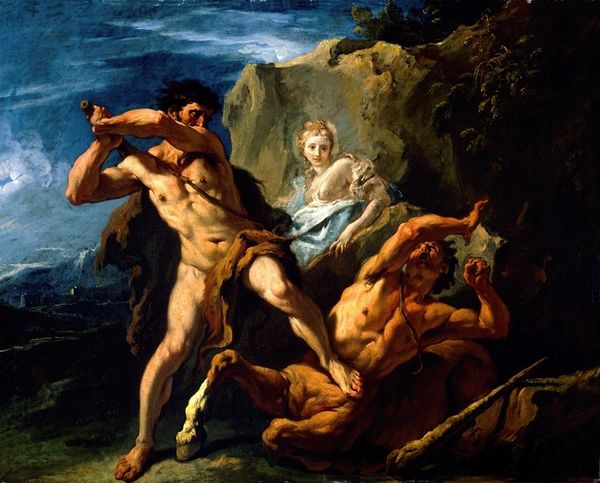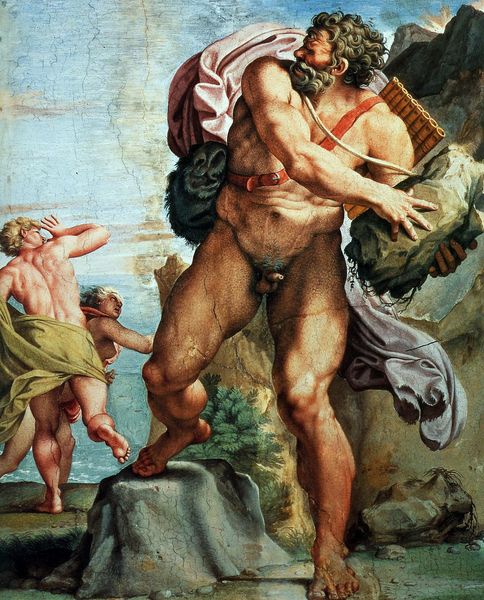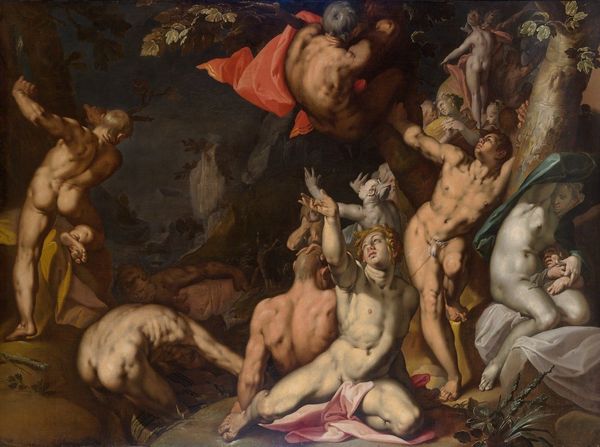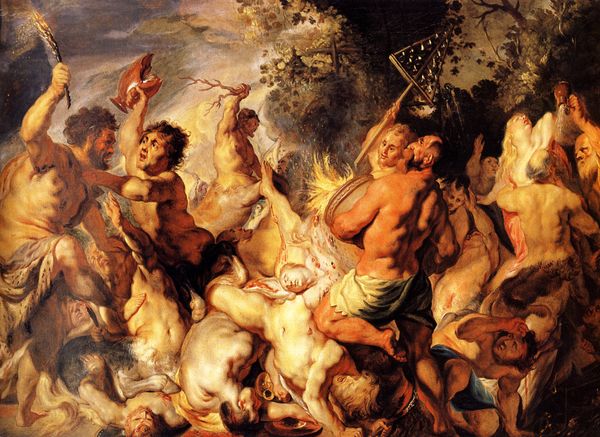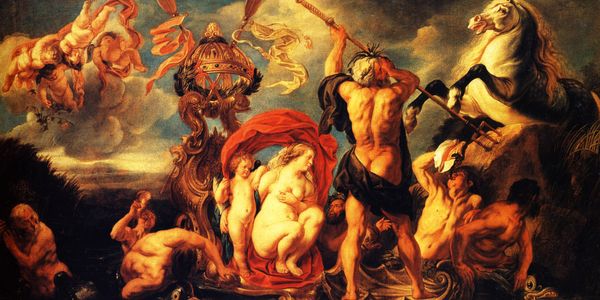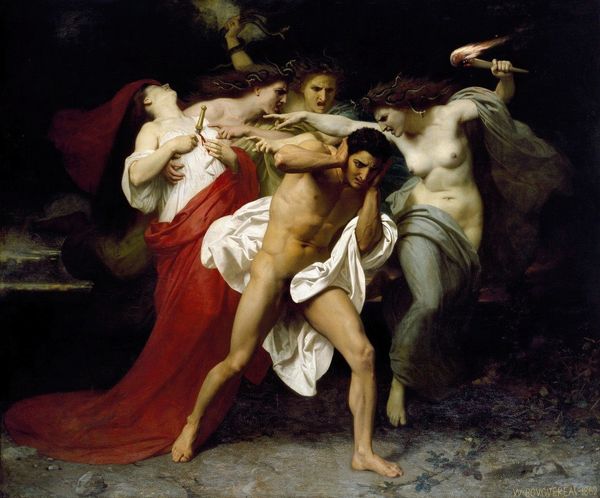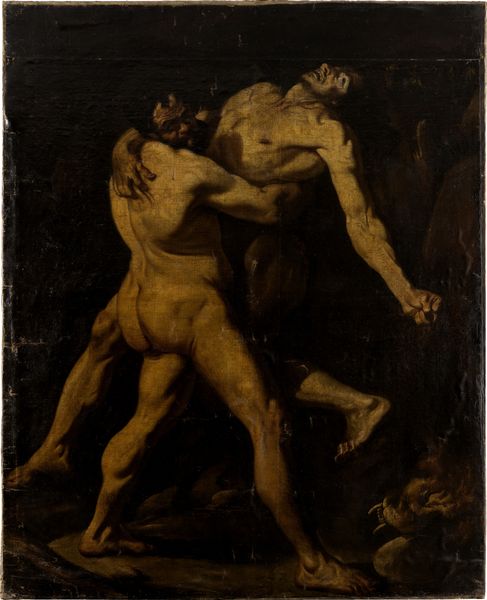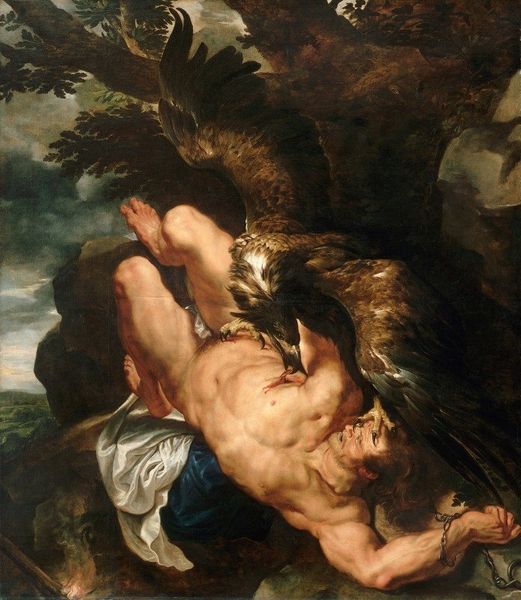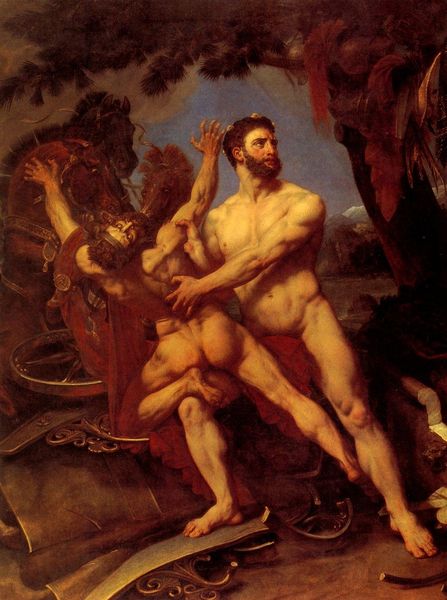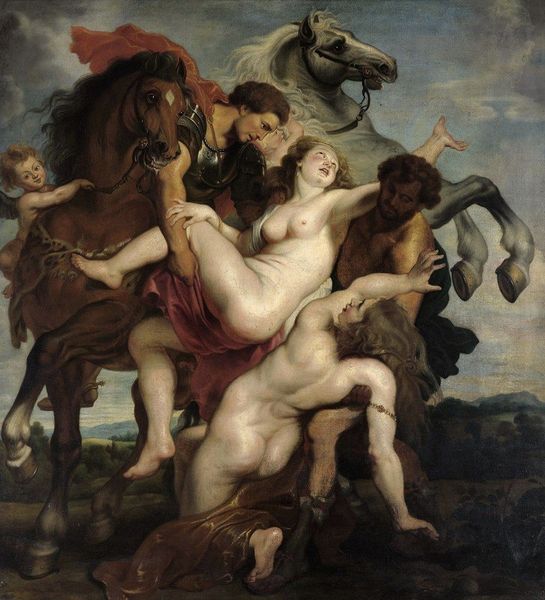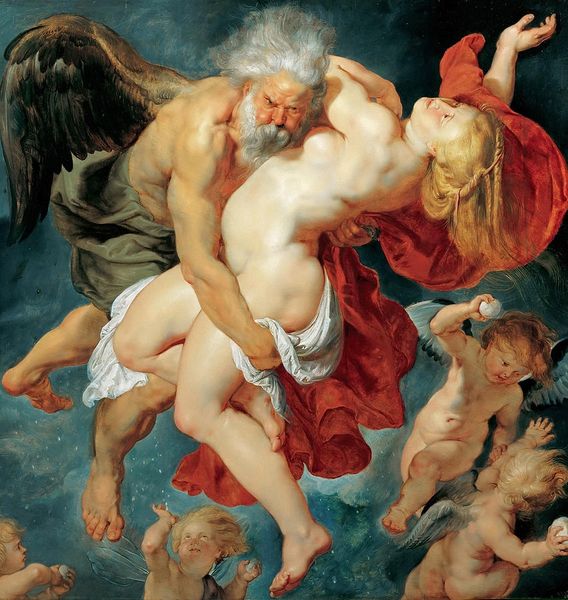
painting, oil-paint
#
portrait
#
baroque
#
painting
#
oil-paint
#
figuration
#
oil painting
#
group-portraits
#
mythology
#
human
#
history-painting
#
nude
#
portrait art
Dimensions: 220 x 220 cm
Copyright: Public domain
Curator: Let's examine "The Drunken Hercules," an oil painting completed around 1611 by Peter Paul Rubens. What are your initial thoughts on this piece? Editor: My first impression is one of overwhelming physicality. The composition feels crowded, almost bursting with the figures’ robust forms, and the muted palette creates a sense of earthy indulgence. Curator: Rubens, indeed, masterfully captures Hercules in a moment of undignified revelry. Note the sociopolitical implications—Hercules, traditionally viewed as the epitome of heroism, is presented in a state of intoxicated vulnerability, embraced by satyrs and nymphs, who would have been viewed in that era as a transgressive inversion of power and masculinity. Editor: Agreed. Semiotically, the contrast between Hercules' traditionally idealized physique and his inebriated state creates a compelling visual tension. Look how the dynamism is heightened by Rubens’s swirling brushstrokes and chiaroscuro effects, particularly on the textures of skin, drapery and musculature that give everything volume and weight. Curator: Absolutely. The figures aren’t just aesthetic forms. Consider how this drunken depiction intersects with contemporary anxieties about male authority and control, particularly in the context of early 17th-century European politics. The era’s social codes regarding masculine restraint are challenged. Editor: Beyond its cultural commentary, one cannot ignore the inherent structure. Notice the careful balance of light and shadow, the way Rubens directs our gaze to Hercules as a center from which we engage with his entourage, all while capturing him at his moment of weakness. Curator: It speaks to broader issues of power, desire, and the body. Rubens uses mythology not just for spectacle but to subtly critique social norms. This resonates even now as we grapple with historical stereotypes about what it means to be "heroic." Editor: By blending technique and narrative so cleverly, it elevates the work above a simple portrait or genre scene. Curator: Examining this depiction from the lens of identity politics, especially how we grapple with mythology in modern discourse, offers rich layers of interpretation. Editor: Indeed, this investigation, blending careful visual analysis with layers of historical and cultural nuance, enables us to experience it beyond its materiality.
Comments
No comments
Be the first to comment and join the conversation on the ultimate creative platform.
